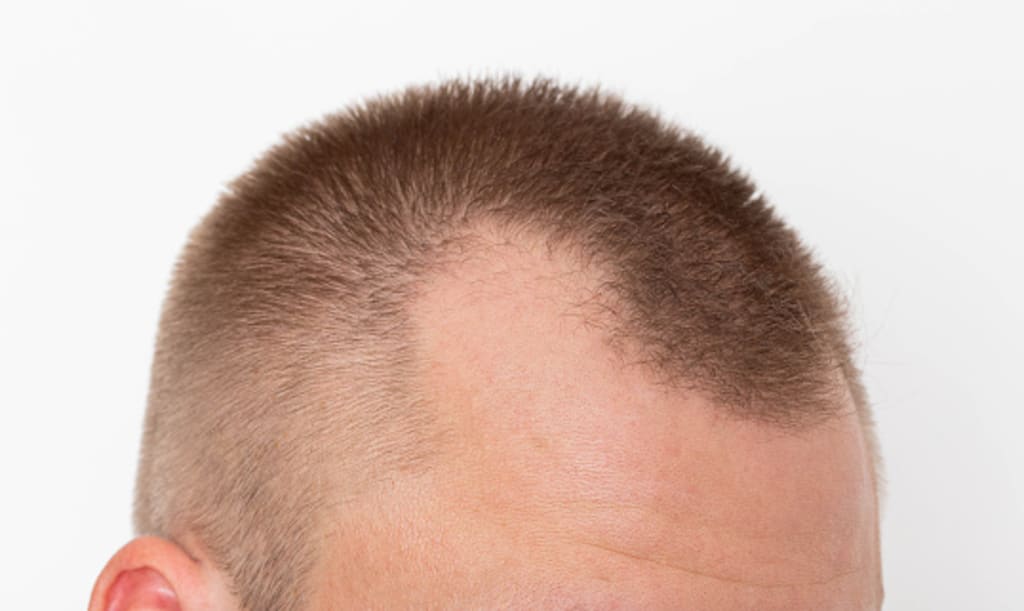What Are Hair Replacement Systems
Effective Ways to recover

Hair replacement systems, also known as hairpieces or toupees, are artificial hairpieces that are worn by people who have experienced hair loss or thinning. They can be made from a variety of materials, such as human hair, synthetic fibers, or a combination of the two. Hair replacement systems can be attached to the scalp using various methods, such as glue, clips, or a specialized adhesive. They are designed to blend in with the wearer's natural hair and can be custom-made to match the individual's hair color, texture, and style. Hair replacement systems can provide a temporary or permanent solution for hair loss.
1. Hair transplants: A surgical procedure that involves taking hair from one part of the scalp and transplanting it to the area of hair loss.
2. Scalp micropigmentation: A cosmetic procedure that involves tattooing the scalp to give the appearance of a full head of hair.
3. Topical medications: Such as Minoxidil and Finasteride, These are FDA-approved medications that can be applied to the scalp to help promote hair growth.
4. Laser therapy: This is a non-invasive treatment that uses low-level laser therapy to stimulate blood flow to the scalp and promote hair growth.
5. Platelet-rich plasma (PRP) therapy: A treatment that involves taking a patient's own blood, processing it to isolate platelets, and then injecting the platelets into the scalp to stimulate hair growth.
6. Scalp reduction: A surgical procedure that involves removing a portion of the bald scalp and stretching the remaining hair-covered scalp to cover the area.
7. Hair fibers: Hair fibers are made from a variety of materials, including keratin and cotton, and are used to thicken hair and conceal thinning areas.
8. Wigs: A wig is a head covering made from human hair or synthetic fibers that can be worn to cover hair loss or thinning.
All of these options have their own pros and cons, and it's important to consult a hair loss specialist or a physician to determine the best course of action based on the individual's specific needs and circumstances.
9. Herbal remedies: Some people use herbal remedies, such as saw palmetto, pygeum, and beta-sitosterol, to help combat hair loss. However, more research is needed to determine their effectiveness.
10. Diet and nutrition: Eating a well-balanced diet that is rich in vitamins and minerals, such as iron, zinc, and vitamin D, may help promote healthy hair growth.
11. Scalp massage: Regularly massaging the scalp can help increase blood flow to the hair follicles and promote hair growth.
12. Stress management: Stress can contribute to hair loss, so managing stress through techniques such as yoga, meditation, and exercise may help reduce hair loss.
13. Hair styling: Changing hairstyles or using hair styling products that cause less damage to the hair can help reduce hair loss.
14. Scalp exfoliation: Exfoliating the scalp can help remove dead skin cells and promote healthy hair growth.
15. Hair-loss concealers: There are a variety of hair-loss concealers available, such as sprays and powders, that can be used to camouflage thinning hair.
It's important to note that not all hair loss treatments will be effective for every individual, and some treatments may have side effects. It's always best to consult a hair loss specialist or physician before starting any treatment.
16. Scalp reconstruction: A surgical procedure that involves reconstructing the scalp to cover areas of hair loss caused by injury, disease or genetic disorders.
17. Stem cell therapy: This is an experimental treatment which involves injecting stem cells into the scalp to promote hair growth. It's still under research and yet to be approved as a treatment for hair loss.
18. Cryotherapy: This is a non-invasive treatment that uses cold temperatures to stimulate hair growth by increasing blood flow and oxygen to the hair follicles.
19. Aromatherapy: Some people use essential oils, such as rosemary, lavender and peppermint, to help promote hair growth by massaging them into the scalp.
20. Acupuncture: This is an ancient Chinese practice that involves the insertion of thin needles into specific points on the body to promote healing and balance. Some studies suggest that acupuncture may help promote hair growth by increasing blood flow to the scalp.
21. Biostimulation therapy: This is a non-invasive treatment that uses a combination of low-level laser therapy, micro-needling and growth factors to stimulate hair growth.
22. Hair supplements: Some people use supplements, such as biotin and collagen, to help promote healthy hair growth. However, more research is needed to determine their effectiveness.
It's essential to remember that hair loss can have many causes and not all treatments will work for everyone. Always consult a hair loss specialist or a physician to determine the best course of action based on an individual's specific needs and circumstances.
conclusion
In conclusion, hair loss can have many causes and there are a variety of treatment options available. These include surgical procedures such as hair transplants and scalp reduction, topical medications, laser therapy, and platelet-rich plasma (PRP) therapy. Non-invasive treatments such as scalp micropigmentation, scalp massage, hair fibers, and hair-loss concealers are also available. Herbal remedies, diet, and stress management may also play a role in promoting healthy hair growth. Additionally, experimental treatments such as stem cell therapy and cryotherapy are under research. It's important to consult a hair loss specialist or a physician to determine the best course of action based on an individual's specific needs and circumstances.
About the Creator
Rudhra
I'm a Freelancer and Technical Support person which create contents on Nature and living lifestyle.
Enjoyed the story? Support the Creator.
Subscribe for free to receive all their stories in your feed. You could also pledge your support or give them a one-off tip, letting them know you appreciate their work.





Comments
There are no comments for this story
Be the first to respond and start the conversation.